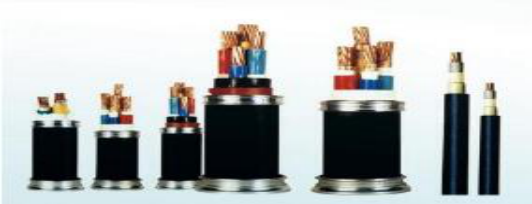What are the characteristics and importance of power cable insulation?
Importance of power cable insulation
The development of wire and cable products is essentially a process of upgrading materials. Wire and cable are widely used, and their performance requirements vary greatly in different applications. Insulation materials of most cables must have good physical and mechanical properties, such as tensile strength, bending resistance, vibration resistance, and torsion resistance, in addition to high insulation resistance, withstand voltage strength or low dielectric loss. The jacket material has the requirements of tear resistance, high temperature resistance, weather resistance, oil resistance and solvent resistance due to adapting to different environments and occasions; some are comprehensive requirements for finished cables, such as radial and longitudinal pressure, sealing, flame retardant, fire resistant, etc. Under the premise that these requirements are superimposed on each other, the reasonable selection and cooperation of materials is the decisive factor for the cable to meet customer requirements.
With the improvement of people's quality of life, the products circulating in the market are becoming more and more attention to functionality, safety, longevity, etc. Cable products have been in the process of continuous renewal, maturity and innovation, and new types of insulation materials are emerging one after another. The rapid development of synthetic resins and blending technologies is slowly pushing the cable industry into a new era of material application.

Characteristics of power cable insulation
The types of power cable insulation mainly include oil-impregnated paper insulation, rubber insulation, polyvinyl chloride insulation, polyethylene insulation, and cross-linked polyethylene insulation. Their characteristics are as follows:
(1) Oil-impregnated paper insulation. Oil-impregnated paper insulation is the main insulating material for power cables produced before the 1970s. Its main features are: high compressive strength; low dielectric loss; stable chemical properties; low price; good corona resistance; long-term allowable operating temperature up to 65 ° C; long service life.
(2) Polyethylene insulation.
Main advantages: high compressive strength; stable chemical properties; low dielectric loss; good low temperature resistance; good mechanical processing performance.
Main disadvantages: poor corona resistance; poor temperature resistance, sharp drop in compressive strength above 65 °C; flammable, fusible, easy to crack.
(3) XLPE insulation. XLPE insulation is made of polyethylene material under the action of high temperature rays or chemicals, which changes the molecular structure from the original linear structure to a three-dimensional network structure, which greatly improves the heat resistance and mechanical properties in the power system. It has been widely used. At present, it is dominant in various voltage levels of 10 to 500 kV. Its main features are: high compressive strength; low dielectric loss; stable chemical properties; good corona resistance; not easy to crack; good heat resistance, long-term allowable operating temperature of over 90 °C, and can withstand short circuit 170~ Instantaneous temperature of 250 °C.
(4) Rubber insulation. Rubber is divided into natural rubber and synthetic rubber. There are many kinds of synthetic rubbers with different properties. Its main features are: stable electrical and chemical properties; good elasticity in a wide temperature range; good moisture resistance; The thermal stability is good at temperatures below °C.
(5) Polyvinyl chloride insulation. Polyvinyl chloride insulation is generally used in the insulation layer or outer sheath of power cables of 6kV and below.
Main advantages: good electrical insulation performance; stable chemical properties; good mechanical processing performance; no flame retardation;
The main disadvantages are: large dielectric loss; poor heat resistance and cold resistance; operating temperature can not be higher than 65 °C.
If you want to know more, our website has product specifications for cables, you can go to ALLICDATA ELECTRONICS LIMITED to get more information

